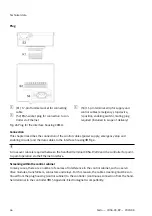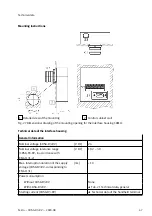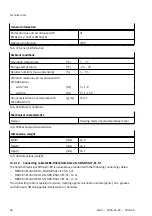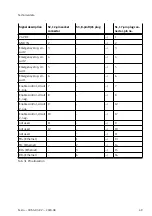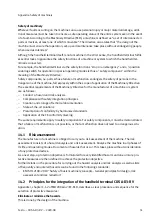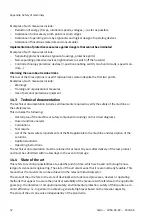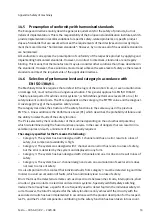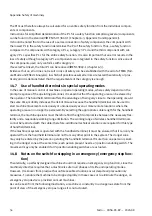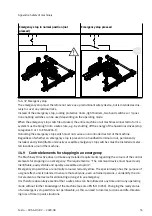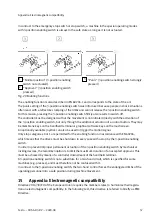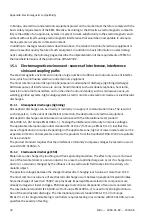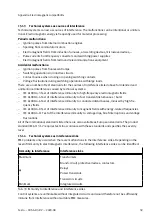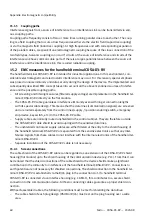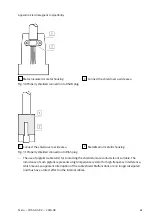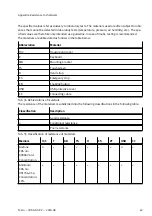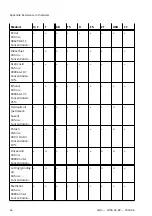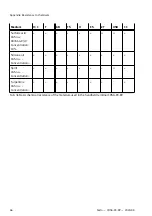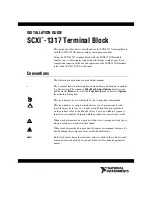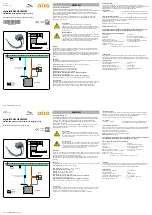
15.1.5
Coupling paths
Interference signals from a source of interference to an interference sink can be transmitted via vari-
ous coupling paths.
Coupling paths frequently consist of two or more lines running parallel close to each other. The coup-
ling is a field coupling that occurs at low frequencies either via the electric field (capacitive coupling)
or via the magnetic field (inductive coupling). At high frequencies and with corresponding expansion
of the parallel cables, we speak of an electromagnetic coupling because of the close connection of the
two field types. Galvanic coupling can occur if circuits of the source of interference and circuits of the
interference sink have common cable parts. If there is a large spatial distance between the source of
interference and the interference sink, this is called radiation coupling.
15.2
EMC measures for the handheld terminal CDSA-D3-RV
The handheld terminal CDSA-D3-RV is intended for industrial applications. In this environment, con-
siderable electromagnetic and electrostatic interference may occur. For this reason, special emphasis
was placed on noise immunity and data security during the design of the device. The implemented and
subsequently described EMC concept takes into account all the above-mentioned sources of interfer-
ence and the possible coupling paths.
–
All screening and filtering measures (filtered supply voltage) are implemented in the handheld ter-
minal CDSA-D3-RV directly on the flat module.
–
The CDSA-D3-RV cable guarantees interference immunity even with longer connection lengths
with its special cable design. This means that the data lines (communication signals) are screened
and are routed separately from the control lines (supply, 3-position enabling switch, emergency
stop device, key switch, etc.) in the CDSA-D3-RV cable.
–
Supply cables are normally routed unshielded in the control cabinet. They are therefore outside
the CDSA-D3-RV cable shield to avoid coupling with the sensitive data lines.
–
The unshielded control and supply cables are either filtered at the entry to the shield housing of
the handheld terminal CDSA-D3-RV or separated from the sensitive electronics so that any inter-
ference signals from these cables do not interfere with the internal electronics of the handheld ter-
minal CDSA-D3-RV.
–
Separate installation of the CDSA-D3-RV cable is not necessary.
15.2.1
Screen connections
The cable shield of the CDSA-D3-RV cable can be regarded as an extension of the CDSA-D3-RV shield
housing (flat module) up to the shield housing of the communication device (e.g. PLC). From this it can
be deduced that the shield connections of the cable shield to the device shields make a significant
contribution to the immunity to interference of the handheld terminal CDSA-D3-RV . Connections to
earth potential are not necessary for shielded connections. The shield connection in the handheld ter-
minal CDSA-D3-RV is established via the RJ45 plug in the connection slot. If a handheld terminal
CDSA-D3-RV is connected via an interface housing (e.g. CAMI-C), this contributes to a secure shield
connection to the communication device. All Festo connecting cables guarantee a proper shield con-
nection.
With self-assembled cables, the following conditions must be met for shielding the data lines:
–
The cable shield of each plug design (DSUB or RJ45) must rest on the plug housing over a wide
area.
Appendix: Electromagnetic compatibility
60
Festo — CDSA-D3-RV — 2020-08

